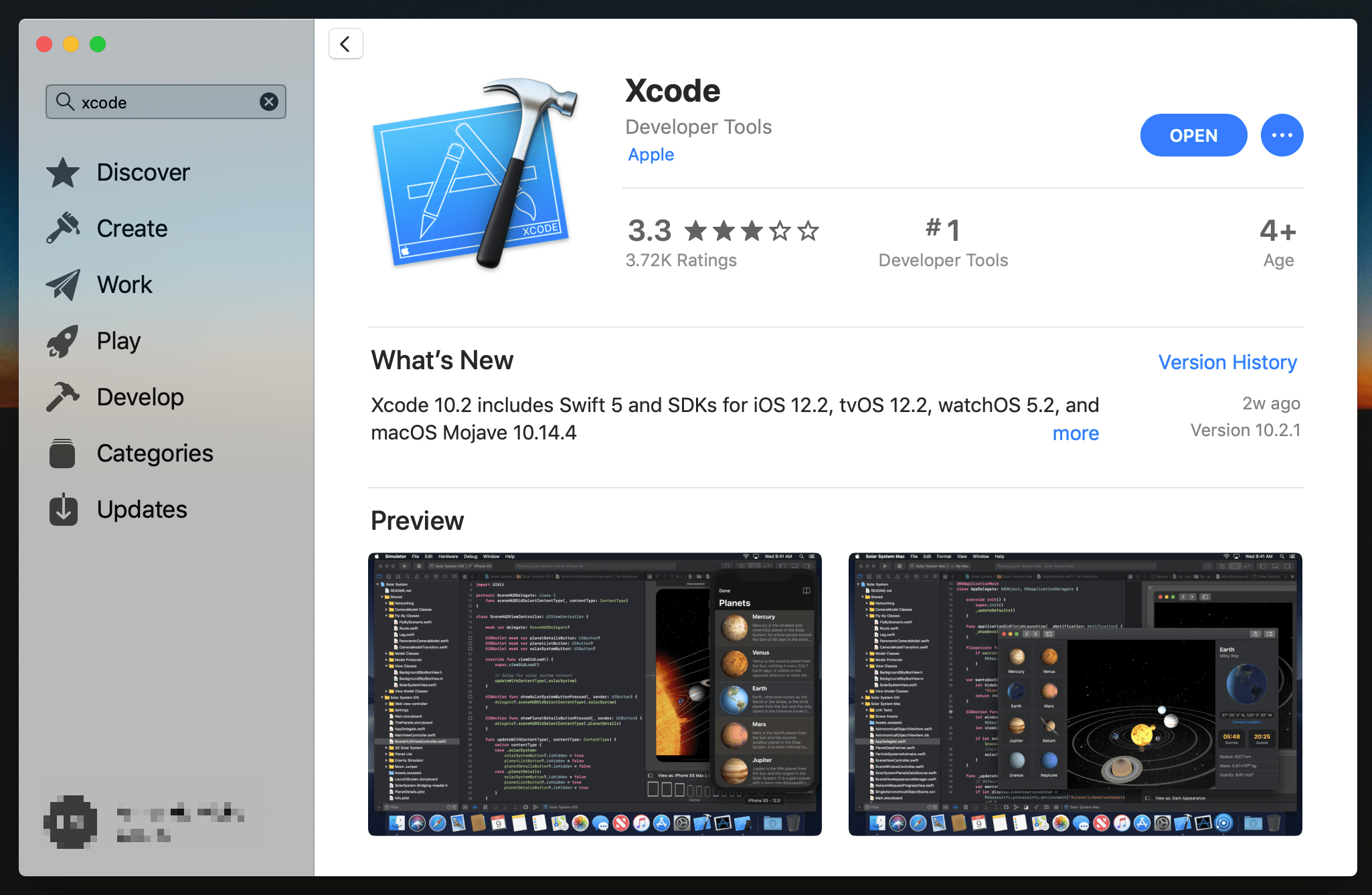

- #Mac get xcode version install
- #Mac get xcode version update
- #Mac get xcode version upgrade
- #Mac get xcode version password
#Mac get xcode version update
Which tries to update everything it can and may well respond with: Software Update Tool In actual fact, you need to continue in the Terminal, and use this: Which rather erroneously gives the impression you need to use Spotlight find something called 'Software Update'.
#Mac get xcode version install
Xcode-select: error: command line tools are already installed, use "Software Update" to install updates
#Mac get xcode version upgrade
However, if you attempt to upgrade it to the latest version, assuming it is installed, using this: To find out which version you have installed there, you can use: Which will, if it is installed, respond with something like: In macOS Catalina, and possibly some earlier versions, you can find out where the command line tools are installed using: No receipt for '' found at '/'.Īlso I had the component for the CLT selected and installed in xcode's downloads section before, but it seems like it didn't make it to the terminal. This command returned the same before and after the install. When they were found, this is what the pkgutil command returned: $ pkgutil -pkg-info=_Executables To install the command line tools, this works nicely from the Terminal, with a nice gui and everything. No receipt for '_Executables' found at '/'. When the tools were NOT found, this is what the command pkgutil command returned: $ pkgutil -pkg-info=_Executables With Mavericks, it is a little different now. Applications/Xcode.app/Contents/Developer Here is what the check looked like: $ xcode-select -p Which basically means that you didn't give make or gcc any input files. And then it will end with: clang: error: no input files Type 'print' to print them or anything else to cancel, By typing 'agree' you are agreeing to the terms of the software licenseĪgreements. Press q to exit the license agreement view. IMPORTANT: BY USING THIS SOFTWARE, YOU ARE AGREEING TO BE BOUND BY THE '/Applications/Xcode.app/Contents/Resources/English.lproj/License.rtf' Hit the Enter key to view the license agreements at Press enter when it prompts to show you the license agreement.

You must agree toīoth license agreements below in order to use Xcode. You have not agreed to the Xcode license agreements. To proceed, enter your password, or type Ctrl-C to abort. Or the deletion of important system files. It will respond with something like the following: WARNING: Improper use of the sudo command could lead to data loss
#Mac get xcode version password
Type in the admin user's password, then the new enabled root password twice. Then to enable root, run dsenableroot in a terminal: $ dsenablerootĭsenableroot:: ***Successfully enabled root user. System Preferences > Users and Groups > (select user) > Change password A blank password won't work when trying to enable a root user. Make sure your admin user has a password. Update: A few other notes when setting this up: Group:ABCDEFAB-CDEF-ABCD-EFAB-CDEF0000000C:everyone:12:deny:deleteīelow are a few extra steps on a fresh Mac that some people might need. PackageFileName = "DeveloperToolsCLI.pkg" ~]$ defaults read /var/db/receipts/.plist Option 2: Check inside /var/db/receipts/.plist for a reference to and it will list the version 4.5.0. Option 1: Rob Napier suggested to use pkgutil -pkg-info=, which is probably cleaner. Use pkgutil -pkg-info=_Executables 10.8 Update: To just print the return value ( thanks xcode-select -p 1>/dev/null echo $? Alternatively, the return value will be 2 if they do NOT exist, and 0 if they do. To check if they exist, xcode-select -p will print the directory. Just enter in gcc or make on the command line! OSX will know that you do not have the command line tools and prompt you to install them! That’s all to check your Xcode version that is installed on your machine.See Yosemite Update. Then you will be able to see all those options above. If you don’t see any option on top of your Screen related to Xcode then simply click anywhere in your Xcode window. The easiest method will come first then we will go for other ways to do the same. Here, I will show you the easiest way to check which version of Xcode is installed on your Mac.


 0 kommentar(er)
0 kommentar(er)
